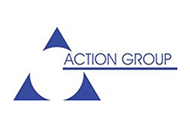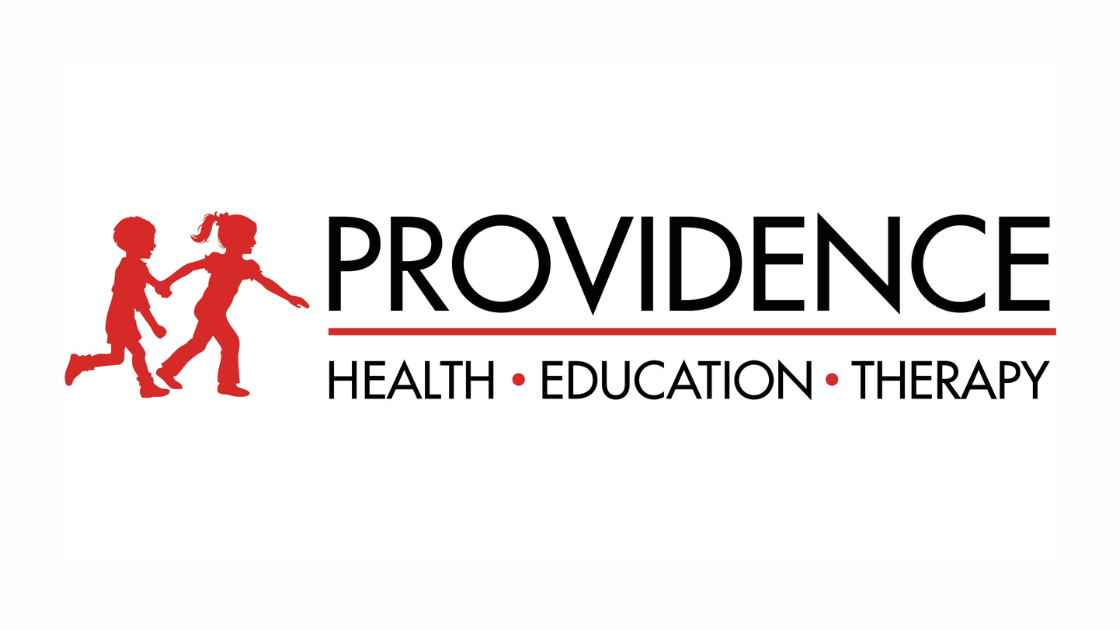Time Entry & Scheduling Fundamentals To Help Your Nonprofit Thrive webinar, featuring John Maher, Janice Gerbrandt, and Sheri Hashimoto:
John (Sparkrock):
Good day everyone, this is John Maher from Sparkrock. It's five after the hour, so we’re going to get started. I’ll be moderating today’s session, and I’m joined by two great guests.
First, we have Janice Gerbrandt from Rehoboth Christian Ministries. Janice, I believe you've been with Sparkrock for six or seven years now?
Janice Gerbrandt (Rehoboth Christian Ministries):
Yes, that’s right.
John (Sparkrock):
Fantastic. Janice will be sharing insights about time entry and scheduling—two critical areas for nonprofits. These functions are essential for both delivering services and managing how grant funding is used. We’re also joined by Sheri Hashimoto from Sparkrock, who’ll walk through a quick demo later.
Let’s dive in. Janice, can you start by sharing how you found Sparkrock, how long you’ve been with us, and some highlights of your experience so far?
Janice Gerbrandt (Rehoboth Christian Ministries):
Sure, thanks John. Rehoboth began our search in 2015 for a provider that could offer an integrated solution—especially one with scheduling functionality. At the time, we were using three different systems for HR, payroll, and finance. They didn’t talk to each other, and pulling reports was painful—hours of Excel pivot tables and VLOOKUPs just to get board-ready reports.
We chose Sparkrock in 2016 because it was the only vendor offering integrated scheduling along with HR, payroll, and finance. We started with the NAV version, fully cloud-based from the beginning, which was a huge plus. Being cloud-based meant we didn’t have to deal with internal IT infrastructure, and we could access the system from anywhere—including phones and iPads.
Later, we moved to Sparkrock 365 to take advantage of Microsoft’s platform evolution. It made sense because we were already using Microsoft products across the organization. The 365 version gave us better access, a modern web-based experience, and full integration with Power BI for dynamic reporting.
The shift to Sparkrock has been revolutionary. Instead of four disconnected systems and hours of manual work, we now have seamless, near real-time reporting. Our staff spends far less time on manual data entry and more time using accurate data—entered by the employees themselves—to inform decisions and communicate with funders, the board, and internal teams.
John (Sparkrock):
Thanks Janice. To summarize—you started on NAV, then transitioned to Sparkrock 365 alongside Microsoft’s cloud evolution. Instead of software needing to be installed on specific computers, everything is now available through a browser. That’s a big shift.
For context, can you briefly describe Rehoboth’s mission?
Janice Gerbrandt (Rehoboth Christian Ministries):
Absolutely. Rehoboth supports individuals with developmental disabilities across five regions in Alberta. We're funded by the Government of Alberta through Community and Social Services. We operate group homes and day programs, with about 500–600 employees who log their time daily. Supervisors manage shift approval, and everything ties into scheduling.
Scheduling has become critical—it connects to absences and helps us ensure employees are taking the time off they're entitled to under employment standards. Before Sparkrock, we relied on fax machines and employees driving in timesheets. Now, it’s all digital, accessible, and efficient.
John (Sparkrock):
That’s helpful. And when you first engaged with Sparkrock, the scheduling feature didn’t yet exist. Can you speak to your experience helping shape that functionality?
Janice Gerbrandt (Rehoboth Christian Ministries):
Yes, we started with time entry and attendance. We shared our needs with Sparkrock—what supervisors needed to meet funder and employment standards. Sparkrock used that input to help develop the scheduling module. It’s now integrated with HR, payroll, and finance.
Once we process payroll, data flows automatically to finance and populates our general ledger. Everything is coded to dimension codes, so HR, payroll, and finance are all speaking the same language. That level of integration has streamlined operations significantly.
John (Sparkrock):
And has that integration had a broader effect on how your business runs?
Janice Gerbrandt (Rehoboth Christian Ministries):
Definitely. We’ve reduced headcount in payroll and finance because data entry and reconciliation are now handled by the people doing the work. Our front-line staff enter their own time and absences, which improves data accuracy and gives back-office staff more time for analysis instead of data wrangling.
We brought everything into the system. Now, when it's time to process payroll, the payroll processor just completes it. We used to have two employees in our finance department—we’ve been able to go down to one. That’s helped us keep our costs down.
In addition, we have a system called the Limited Manager component. It helps supervisors or managers—those with limited backend access—enter data that relates directly to their roles. They only see what’s relevant to them, and the data is more accurate because they’re the ones entering it. We're no longer trying to analyze or figure things out after the fact. They input the information, and we just process it. That makes everything easier for our backend team.
John (Sparkrock):
That’s actually a common theme we hear from many Sparkrock users. In a lot of ways, what our system is really about is spend management—making sure the dollars coming in from funders are going to the right places, without it taking extra time to post, collect, and report back to managers.
You're referring to our “Manager” user type, which not only handles time entry, but can also initiate purchase or payment requests. So again, I’d say this helps your organization grow without needing to grow your finance team at the same pace. You’re able to add resources in the field—where your constituents truly need support—without needing a bunch of additional back-office staff.
Janice Gerbrandt (Rehoboth Christian Ministries):
That’s exactly right. And beyond purchase orders, our managers can also submit HR requests when we’re hiring. Even though our employee count has grown, we haven’t needed to increase our provincial office support staff.
Also, when COVID hit, we were able to pivot and adapt immediately because we were already using the scheduling component. I had peers in similar organizations scrambling—driving across cities and districts just to collect timesheets. It was a mess.
We didn’t drop the ball once. Our first payroll after everything shifted to remote was delivered on time. That was huge. Natural disasters and unexpected events happen. And let’s be honest—people love their jobs, but they also need to get paid. Sparkrock helped make sure that never became a problem.
John (Sparkrock):
So in a sense, Janice, you’ve really validated the promise of cloud computing. There’s no longer a need to rely on a specific PC with software loaded on it to do your job. Plus, as you’ve already pointed out, data entry is in the hands of the people doing the work.
You’ve alluded to this already, but could you elaborate on how this has affected the timeliness of your reporting? Especially when it comes to your responsibilities as a nonprofit—receiving funding and having to report back on it accurately and on time?
Janice Gerbrandt (Rehoboth Christian Ministries):
Before Sparkrock, we used pivot tables, vlookups, and Excel to pull data. Now, with Power BI and the built-in reports, we can complete financial analysis and funder reporting within two months of the reporting period—sometimes faster.
Let me give you an example. For our board report in October, we used to only be able to report up to the end of June—that’s the first quarter: April, May, June. This year, we presented data up to the end of August. That’s only about a month and a week after the close of August. That’s huge.
And it’s all because everything entered into the system is immediately available. We use Power Query with Power BI to extract financial reports in real time. We’re not waiting three or four months anymore. Our board was blown away by the detail and data exposure we were able to provide.
John (Sparkrock):
So if we compare the time it used to take before Sparkrock to now—would you say the savings are measured in weeks or months?
Janice Gerbrandt (Rehoboth Christian Ministries):
Definitely months. Before, our finance manager had to pull payroll data from our old system and upload it into another one. There was no exposure to dimension codes.
Now, payroll is posted—say, on Thursday—and by Thursday afternoon, our finance manager can already see it in the system. Before, it could take days just to upload and transform the data. And there was no way to see, for example, the hours coded to a specific group home or funded unit.
Now, we can report every dime spent—right down to the individual we’re supporting. That level of clarity goes back to our funders, which was never possible before. Our old system gave us data dumps, but Sparkrock gives us detailed visibility.
John (Sparkrock):
That’s an important shift. On a related note, we often hear from prospective customers who are using an external payroll service. There’s a perception that outsourcing payroll is easier than bringing it in-house. But you’ve described how integrated payroll has made a big difference. Can you elaborate on the benefits of processing payroll in-house?
Janice Gerbrandt (Rehoboth Christian Ministries):
Absolutely. Even when we ran payroll internally before, it took a lot of time. We started Monday morning and would go right up until Thursday at 3 p.m.—the last possible moment before we had to send it to the bank. Four full days.
Now, with Sparkrock 365, we start payroll Monday. Employees have until midnight to finish entering their data. By Tuesday evening, 99% of the time, payroll is complete. So it’s processed in 24 hours.
And because we know our people, if something's missing or unclear, we can contact them directly. With an external provider, they’d just process it, errors and all. If a supervisor forgets to approve a time, we can run a mini payroll right away to fix it.
We process for 600 employees in a day. So if it’s just two or three people who got missed, we can run a small batch in no time. That flexibility is critical.
Our goal used to be one payroll run per pay period. In the past, we were doing four or five. Now, we hit that goal 95% of the time. That’s thanks to Sparkrock’s training materials, videos, and resources for our staff.
The only real barrier we still face is internet speed in some locations—but that’s not the system’s fault. It’s just what comes with being spread across a large province.
John (Sparkrock):
You know, the slowness of internet providers will get solved with time. If COVID brought us anything, it’s that people now demand better connectivity—and providers are responding to that.
Just for the audience, some quick clarification: Janice has referred a couple of times to "Sparkrock 2016." For context, we at Sparkrock have been serving the nonprofit sector since 2003. The version Janice is referring to was our product just before moving fully to the cloud.
Some of you may have seen this on our website: what we aim to provide is the best of both worlds. Sparkrock 365 follows Microsoft’s platform closely—we evolve in lockstep with Microsoft. But the added value is that Sparkrock overlays nonprofit-specific needs and functionality. Janice has given us great examples of how this plays out in time entry and scheduling.
Janice, can you talk a little about other benefits you've experienced being in the cloud—especially around onboarding employees and getting them up and running on the system, compared to what that process used to look like?
Janice Gerbrandt (Rehoboth Christian Ministries):
Sure. We’re now able to get a new employee online as soon as they’re signed up—there’s no interruption or waiting. Once our HR administrators enter them into the system, they can log in right away and view the schedule for the homes they're assigned to.
That’s huge, because it means they can immediately bid on open shifts. Anytime a vacant shift is posted in a program they’re registered in, they can see it and submit a request. It’s reduced the time our supervisors spend on the phone trying to fill shifts. Employees now take the initiative, and supervisors aren’t chasing them down—except in last-minute cases, like someone calling in sick an hour before their shift starts.
John (Sparkrock):
That makes a lot of sense. And earlier, you mentioned the mobile accessibility of the cloud-based system. Can you speak more about how that's helped with time entry and scheduling?
Janice Gerbrandt (Rehoboth Christian Ministries):
Absolutely. "MySparkrock"—which is the employee-facing component—is available both in a web browser and as a mobile app. Backend users can access the key functions they need right from their phones or tablets.
For example, I can submit an HR request on my phone if I’m out of the office. I can approve or advance it, and HR staff can process the request right away so that new hires get access to MySparkrock and can start bidding on shifts immediately.
That seamless ability to work from anywhere, on any device, has been a huge time-saver for our organization.
The other thing I wanted to mention is that Rehoboth made a deliberate decision to use Sparkrock strictly "out of the box." That’s been huge for us.
Customizations might sound appealing, but we found they often create more problems than they solve. We had one customization that broke three or four other functions—very frustrating. Sparkrock helped us fix it, but it confirmed our decision to avoid customization whenever possible.
We’ve committed to letting the system drive the process. That reduces human intervention and keeps things clean and efficient. And honestly, the out-of-the-box solution gives us everything we need.
John (Sparkrock):
That’s a great point. With all due modesty, Sparkrock has been doing this for nearly 20 years. The relationship we have with you, Janice, is common across our customer base—we gather input and feed it back into the product. In that sense, Sparkrock 365 really does reflect best practices.
So when someone is considering a new system—which can be a daunting process—they can lean on that. You're not changing processes just because; you're changing them because the system is designed to support better practices.
And there’s a real cost and operational advantage to that. Speaking of which, can you talk about your actual migration from Sparkrock 2016 to Sparkrock 365? Was it as seamless as expected?
Janice Gerbrandt (Rehoboth Christian Ministries):
Yes, it was. We only had two customizations that needed to be addressed before migrating, which made the backend process much smoother.
Of course, there was some learning involved—there always is—but overall the transition was seamless. It was far easier than expected.
John (Sparkrock):
Fantastic. Thanks, Janice. If you don’t mind sticking around, we’ll open it up for questions shortly. But first, just to give folks a visual sense of what Sparkrock 365 looks like, Sher, I’ll turn it over to you for a quick walkthrough.
Sherry Hashimoto (Sparkrock):
Thanks, John. I’m not on camera today because I wanted to make sure I had enough bandwidth and didn’t run into any delays—I'm working from my home office. Let me share my screen.
John (Sparkrock):
We can see it—go ahead.
Sherry Hashimoto (Sparkrock):
Great. For those of you already using parts of Sparkrock’s cloud solution, especially self-service, this will look familiar. For those who haven't seen it, we've simplified it intentionally to make it more user-friendly. Everyone uses their phone for everything these days, so the transition has been smooth.
Users can log in, and scheduled users will see a scheduling menu. In the top right corner, there’s also a web time clock feature for employees who need to clock in and out. If you already have a clocking system, we can integrate with that as well.
As an employee, you can view your schedule—for example, seeing that you work Mondays and Thursdays, and at what times. There’s also a calendar view, so you can check your shifts for the entire month.
If you need more detail—like different locations, shift notes, or contact info—you can drill down further. It’s all accessible right from this interface.
Sherry Hashimoto (Sparkrock):
This gives a bit more detail. Going back to the list view of the schedule—you’ll notice that this employee has already reviewed and approved time for past shifts. By clicking and advancing the date, they can see when they’re scheduled next.
In the upper left, you can also see Janice mentioned they have employees working across multiple locations. The system supports that too—employees only see locations where they can be scheduled.
If they want to confirm their shift, it’s as simple as reviewing the details. If they worked longer or had a different activity, they just click on the shift, make any adjustments, and submit for approval. That confirmation goes to their manager for review, and once it’s approved, it flows directly into payroll.
From a scheduler's perspective, they can see all scheduled employees—either in a list or calendar view. We use color coding to draw attention to any open shifts. You can also search specifically for vacancies—say you need to fill a “driver” shift. When entering that vacancy, you can add comments or offer it out.
The system automatically filters eligible staff—only showing employees who are both available and qualified. For example, if you need a certified lifeguard or a licensed driver, it will only show those who meet that criteria.
If you choose someone like Ramone, you can see how many hours he has worked. That’s helpful for assigning shifts to those with the least hours. And if someone calls in sick, the scheduler has quick access to contact info—they can call the person directly without leaving the platform.
Here’s what a shift bid looks like in Outlook. The employee will get a notification by email (or on their phone) and can accept or reject the shift. If you allow shift trades, those are also handled in the system and sent for approval.
Janice Gerbrandt (Rehoboth Christian Ministries):
Sherry, just one quick addition. When you're offering a shift, sometimes we don’t have a trained staff available. There's an option to show "non-trained" employees—people who work in the organization but not necessarily in that specific program. That’s a really important feature for us.
Sherry Hashimoto (Sparkrock):
Yes—thank you for that. That checkbox allows the system to show additional employees outside the standard assignment, in case you’re short-staffed.
This integration with the HR system is where things really come together. It tracks employee training, certifications, and availability—all feeding back into scheduling.
If someone requests vacation or is out for training, the schedule updates automatically. So there's no need for manual tracking.
As mentioned, here’s a shift offer for Ramone. You can also see Pedro forgot to clock out—no problem, either Pedro can correct it, or a manager can enter the actual time.
For scheduled staff like Maria, the system can default in paid holidays. If she works that day too, she just confirms the hours, and shift differential pay is calculated.
All of this ties back to finance. When payroll is processed, it's posted to the correct places—funds, departments, and dimensions—automatically.
Now, if you're managing approvals, it's very visual. You can sort by person or position, and see who’s clocked in, who’s late, who’s working overtime, and so on.
Creating and managing schedules starts with setup—locations, schedule areas, and qualifications. For example, some areas allow shift trades, others don’t. You can customize those rules.
Then you move to schedule templates. We’ve built this with Excel-style familiarity. You can open in Excel, edit, and import it back. Whether you schedule weekly, bi-weekly, or use rotations—it’s all supported.
That wraps my overview of how scheduling and time entry works for both employees and schedulers inside Sparkrock 365.
John (Sparkrock):
Very good—thank you, Sherry. We’re coming up on the final 10 minutes. A few questions have come in, so let’s open it up.
John (Sparkrock):
Janice, we have a question that came in a few times about Microsoft integration. Sherry just touched on it, but I think you're best positioned to answer this.
What does that Microsoft integration actually look like for your team? And can you also touch on Power BI—how that fits into the overall experience?
Janice Gerbrandt (Rehoboth Christian Ministries):
Great question!
Microsoft integration has made it so simple. Our staff all have Microsoft accounts, and with a single login, they can access everything.
When they click the nine-dot icon in the top left corner, they get a full app launcher—and from there, they can open anything: Outlook, Teams, Sparkrock 365.
Before, we were using multiple systems, and it was confusing and frustrating for staff. Now it’s just one system, one login, and everything’s unified.
Janice Gerbrandt (Rehoboth Christian Ministries):
The interface format is consistent. When staff see the Excel-style templates Sherry showed, it looks familiar. It feels like a Microsoft product—there's nothing new to get used to.
As for Power BI—before, we used Jet Reports. Nothing wrong with Jet, but it wasn’t built into Microsoft. Now, Power BI is our reporting engine and it's been a game changer.
We’ve created 20+ reports that supervisors use regularly to compare shifts to budgets, monitor attendance, and check for missing approvals. Instead of digging through individual schedules, they can look at these reports and act quickly on timesheet day.
Security and filters ensure supervisors only see wages for the employees they manage. Power BI can build nearly any report you need. At first, Sparkrock's expert helped me, but now I can build reports on my own. It’s very intuitive—similar to using IF statements in Excel. If you understand that logic, you can learn Power BI.
John (Sparkrock):
Just to clarify, Power BI is a Microsoft product and in many cases is already included in your Office 365 license, depending on your plan.
Janice Gerbrandt (Rehoboth Christian Ministries):
Exactly. We paid a small extra fee—around $4 per user—and it’s worth every penny. I can’t imagine not having it now.
John (Sparkrock):
We're also getting a few questions about change management. As you mentioned earlier, the platform puts time entry in the hands of shift workers and enables managers to approve directly in the system. That kind of shift can be a big one for an organization.
What was your experience like rolling out the system—was there resistance? Did people embrace it?
Janice Gerbrandt (Rehoboth Christian Ministries):
It was a bit of both. Supervisors loved it immediately because they no longer had to run around collecting paper timesheets. The time saved was huge.
Some employees resisted—it was a transition from paper to digital, and not everyone was comfortable with computers. But honestly, the world has changed. Everyone now uses technology in some form—online banking, email, social media. It’s become second nature.
And the beauty of Sparkrock 365 being built on Microsoft is that it’s not foreign. People are already used to Outlook, Word, Excel—it’s all integrated. That familiarity really helped with adoption.
John (Sparkrock):
That goes back to our "Best of Both Worlds" message—leveraging Microsoft’s common tools within a system that’s purpose-built for nonprofits. Familiarity reduces barriers and makes implementation smoother.
Janice Gerbrandt (Rehoboth Christian Ministries):
Absolutely. And because everyone already had a Rehoboth email account, we tied Sparkrock communications into that. So all bid requests, schedule changes, time-off approvals—they all flow through Microsoft Outlook.
Supervisors get a notification. Employees get confirmation. No confusion. It’s seamless, and that clarity helped people embrace the system even more.
John (Sparkrock):
Fantastic. I see we’re right at the top of the hour. Let me offer one last chance for questions…
All right, going once… going twice…
On behalf of Sparkrock and Janice, thank you all for your time this afternoon. If you'd like a recording of this session, just let us know—we’re happy to share it.
And if you’d like to connect directly with Janice, I hope she won’t mind me saying—she’s open to chatting. She's got a wealth of experience both in nonprofit operations and in implementing systems like Sparkrock 365.
Thanks again, and have a great afternoon!







.png)








